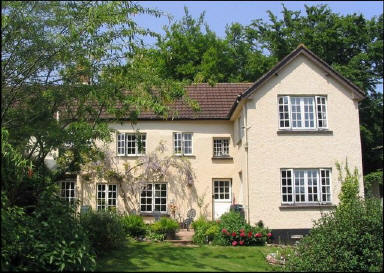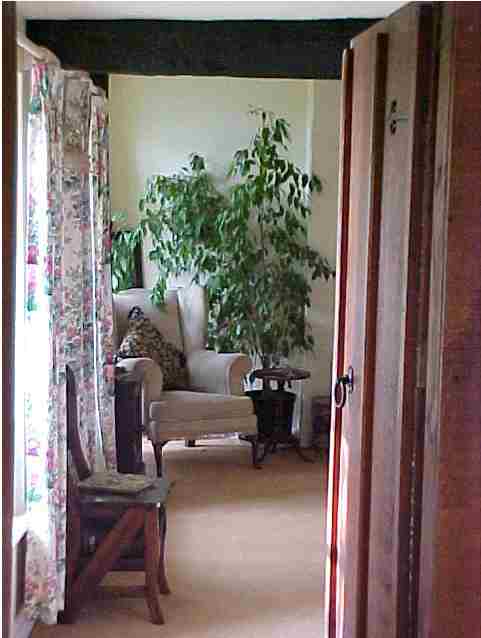| |
Tiverton's Historical Time Line
650 AD Founded early in the Saxon settlement and was a Royal estate from the
beginning.
880 - 5 Tiverton referred to as "Twyforde", the place being reached by
a ford over each river, in King Alfreds Will.
1066 The Royal Manor of Tiverton belonged to Gytha, Danish born widow of Earl
Godwin. Their daughter, Edith, had married the saintly Edward the Confessor.
When he died without an heir in January of this year, Gytha's son, Harold, was
chosen by the parliament to succeed him. William of Normandy laid claim to the
throne and having defeated Harold at the Battle of Hastings, proceeded to subdue
the kingdom of Wessex. Exeter had closed its gates against the advancing army of
William but was forced to surrender within days. Tiverton was now at the mercy
of William the Conqueror.
1106 Henry I gave the large and valuable manor to Richard de Redvers whose son
Baldwin was created Earl of Devon. Tiverton Castle built by Richard de Redvers
on the orders of Henry I.
1193 - 1217 A Borough was founded at Tiverton by William de Vernon, 5th Earl of
Devon.
1293 The de Redvars family line died out and the Royal manor passed to a kinsman
by the name of Hugh de Courtenay.
1348 - 50 Black Death.
1517 John Greenway's Chapel and South porch added to St. Peters Church.
1529 John Greenway's Almshouse in Gold Street founded.
1549 Cranmore Castle, the ancient earthwork was the scene of a fierce battle in
this year arising out of a dispute as to whether a child should be baptised by
Protestant or Roman Catholic rites.
1579 Waldron's Almshouse erected for eight old men.
1588 Spanish Armada.
1591 The plague wiped out one tenth of the population.
1598 Great Fire (frying pan fire) burnt town from end to end.
1599 Blundells school founded by Tiverton woollen merchant, Peter Blundell. The
old school built in 1604 still stands near the Lowman bridge at the South East
of the town. Converted into dwelling houses in 1880.
1612 Great Fire nicknamed the "Dog fight fire" (due to a dog fight
which distracted attention away from a furnace) destroyed everything with the
exception of the Church, Castle, schools, almshouses and a few poor hovels.
Because of this fire, James I granted Tiverton its first Royal charter on 10th
August 1615.
1615 Tiverton was incorporated and at the same time made a parliamentary borough
with two representatives.
1644 Tiverton occupied by Essex and the main parliamentary army but was regained
by the Royalists after the parliamentary defeat at Lostwithiel.
1645 During the English Civil War Tiverton Castle was beseiged by General
Fairfax of the Roundhead army and the Castle's life as a military stronghold was
over.
1655 The Oliver Cromwell charter states that market day would no longer be held
on Mondays, but as today, would be held on Tuesdays to avoid the profanation of
the Sabbath by traders preparing their wares which had provoked God's wrath,
which manifested in the two Great Fires of 1598 and 1612. This charter is
displayed at Tiverton museum.
1714-30 St. Georges Church, in the middle of town was built and is the only
notable Georgian church in Devon.
1731 Third Great Fire in June. 300 houses destroyed and over 2000 people were
made homeless.
1732 Act of parliament passed decreeing that in future all Tiverton houses must
have roofs built of tiles or slates, not of thatch.
1783 John Heathcoat was born.
1814 Grand Western Canal built for transporting Lime from the quarries to the
kilns.
1816 One of the last woollen mills taken over by John Heathcoats, a lace
manufacturer from Leicestershire.
1830 The Panier Market opened on the site of the old bowling green. The
following year pens for cattle, sheep and pigs were provided at the Newport
Street end.
1838 Grand Western Canal completed to Taunton.
1848 Tiverton Junction railway station built on the main Exeter to Bristol line.
Today this is known as Tiverton Parkway.
1856 St. Paul's Church (Church of England) completed.
1858 Tiverton Gazette newspaper first published.
1861 John Heathcoat died.
1864 The Victorian Town hall was erected on the site of the ancient Guildhall or
Town house.
1869 Knightshayes house built by William Burges.
1885 Tiverton was disfranchised and merged with a County division.
1912 The unveiling of the statue of King Edward VII at Lowman Green.
1936 The old woollen mill (John Heathcoats) destroyed by fire and was replace by
a modern building.
1946 Arial archaeology reveals a faint soil mark on a hillside at Bolham. (This
would turn out to be a Roman settlement.)
1960 The Great Flood. Westexe was overwhelmed by the surging waters.
1981-6 Excavations at Bolham unearth a Roman fort dating from 50 AD where some
500 men of the Augusta II legion would have been stationed.
1988 North Devon link road built, driven through the northern outskirts to give
access from the M5 to the North Devon coasts of Barnstaple and Bideford. |


